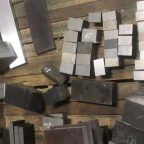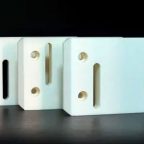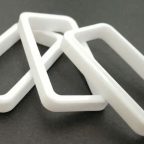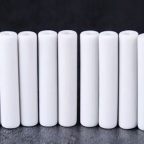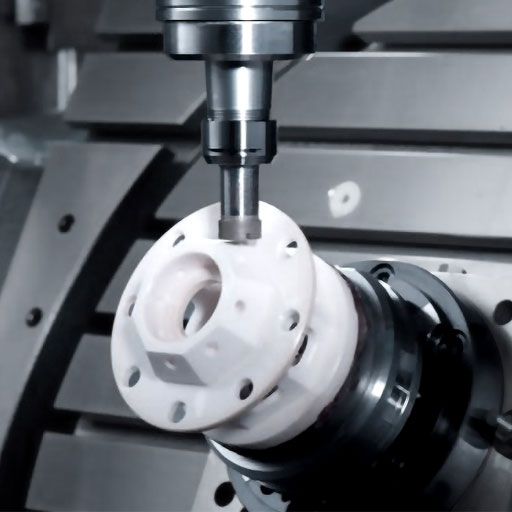For different kinds of machinable ceramics, there are different machinability mechanisms, mainly including the following: machinable ceramics with lower elastic modulus; weak interphase interfacial peeling caused by thermal mismatch in multiphase ceramics; Mn+lAXn , the processability of such compounds, etc. The needle-like or flake-like mica crystals with large aspect ratio are uniformly precipitated from the glass phase to form a staggered layered structure. During machining, multiple micro-cracks are generated around the grains in contact with the cutting edge of the tool, and the cracks are bifurcated and bridged, resulting in the spalling of the matrix grains.
Through research, Padture et al. pointed out that the weak interface, long grains and internal stress were introduced into SiC ceramics to make heterogeneous SiC ceramics. In heterogeneous SiC materials with grain boundary structure, the initiating cracks can easily disperse to the maximum stretchable pressure orbits through weak intergranular boundaries, effectively controlling the formation of macroscopic fractures. The result of this phenomenon is that local face cracking occurs at the weak grain boundaries of the surface, resulting in a damaged layer with a discontinuous defect distribution, and the overall removal of the material occurs through the removal of individual grains in contact with the surface. , a structure similar to that observed in alumina and glass-ceramics. These structures can significantly improve the machinability of SiC.
In the porous Si3N1 with traditional microstructure, the columnar B-Si3N1 is selectively grown by microdesign. After research, it is found that the bending strength of porous Si3N4 has a great relationship with the microstructure and phase transition. For polycrystalline Si3N4 ceramics, the columnar crystals can improve the toughness in the presence of relatively weak interfaces, which is closely related to the bridging mechanism of the weak interface deflection crack waves.
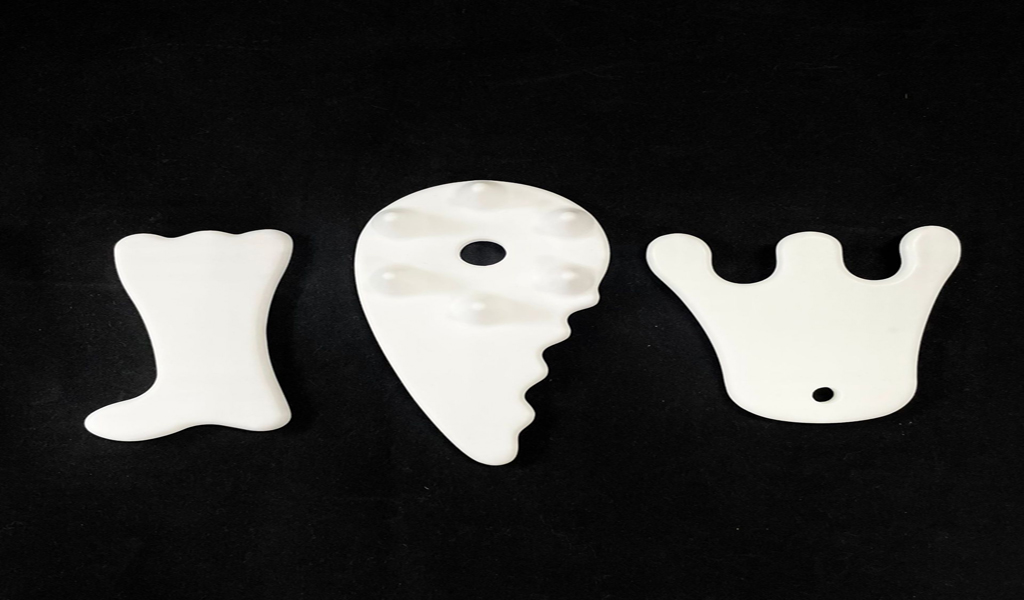
Microstructural observations of the damage mechanism around the Ti3 SiC2 indenter indicate that Ti3 SiC2 is a damage-resistant material capable of containing a certain degree of micro-damage in a small area around the indenter. Scanning electron micrographs (SEM) of polished surfaces and fractures showed that. Ti3 SiC2 has a layered structure, and there is a weak bond between the Si layer and the TiC octahedron. The material resists damage through multiple energy absorption mechanisms at weak interfaces, including: formation of microcracks, diffusion, deflection, grain plucking, and bending of individual dies, etc. Research on oxide machinable ceramics was initially inspired by the fact that two-phase compounds of oxides and rare earth phosphates should be easily removed due to the formation and connection of cracks through weak grain boundaries between the two phases. However, although it was found that single-phase LaPO4 can also be processed, the removal of grains is not the only removal mechanism, and another possible mechanism is related to the deformation bands observed in individual grains below the contact zone of LaPO4. When the phosphate and oxide are combined, weak interfaces are formed. When cracks appear in the material, they will deflect and diffuse along these weak interfaces. During the r-adding process, the further expansion of the cracks into the material is prevented. Thus, damage to the material during machining is reduced. In addition, due to the existence of these microcracks, the removal of crystal grains along the interface during machining becomes easy, the roughness after machining becomes smaller, and the machining accuracy is improved.
Liu Jiachen and others from Taizu University believed that after the introduction of CePO1 into the oxide, a weak bond was formed in the matrix, and these weak bond interfaces would directly affect the removal form during material machining. The main change is mainly in the form of grain removal. Xinyuan Hao conducted a transmission electron microscope (TEM) study on the prepared Si3N4/BN nanocomposite ceramics and found that the composite ceramics were formed by nano-scale hexagonal boron nitride (h-BN) uniformly dispersed in Si3N1 grains and grain boundaries. Intracrystalline/intercrystalline hybrid nanocomposites. The improvement of thermal shock properties of the material is due to the high temperature properties of BN and its uniform distribution in the matrix. The machinability is obtained due to the existence of weak grain boundaries between Si3N4 and BN in the Si3N4/BN composite, and h-BN has a graphite-like layered structure with small interlayer forces, and h-BN has a small interlayer force. The nanometer size is uniformly dispersed in the intergranular and intergranular of Si3N4. When machining, the shear stress applied by the tool to the material will cause weak grain boundary delamination or cleavage along the interlayer of BN, thus endowing the tree with good performance. of processability. Different from other methods of improving materials, this method obtains a material with high mechanical strength, excellent thermal shock performance, anti-oxidation, and good workability. In addition, Xinyuan Haoichi also found that nano/nanostructured multiphase ceramics will give new properties to ceramic materials, such as metal-like ease of machining and superplasticity.
Pintejin machining ceramic service include : Alumina Ceramic Parts, Zirconia Ceramic, Silicon Carbide Ceramic, CNC Machined Aluminum Nitride Ceramic, Machinable Ceramic Parts, Glass Ceramic,Macor Ceramic,Powder Metallurgy Dies,Ceramic Injection Molding,Ceramic Dry Pressing,Ceramic Extrusion Dies
